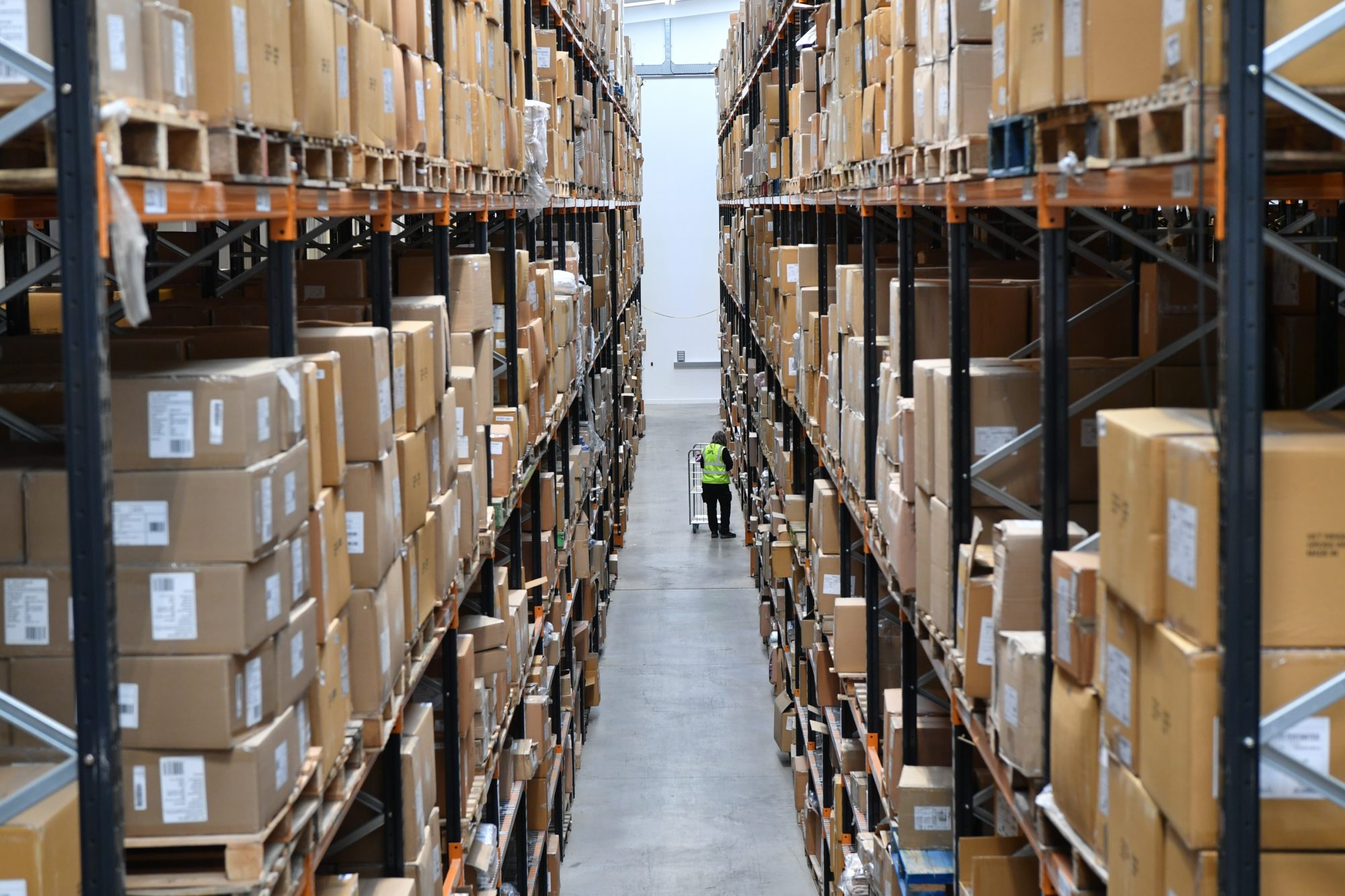Regardless of what your eCommerce store sells, it’s likely that you have a peak season; a time of the year when you make the bulk of your sales. So, it’s vital that you’re as prepared as possible for this period. The 3PL team has provided their top 10 tips to help you do just that, and be as prepared as possible for your peak season, below…
What is peak season planning?
Before we delve into our top 10 tips, let’s define exactly what we mean by the term ‘peak season planning’.
Peak season planning refers to the process of gearing up your eCommerce store’s operations in readiness for your busiest sales period(s) of the year.
It usually involves a deep dive into your current operations, looking in detail at everything from the technical health of your website through to the speed, efficiency and accuracy of your fulfilment operations.
The core aim of peak season planning is to identify weaknesses in your operations – especially when order volumes and activity will increase – and set out actions to remedy them.
When are the main peak seasons for eCommerce stores?
Whilst peak seasons will vary depending on what eCommerce stores sell – a store selling holiday clothing is going to have its peak in the summer, whilst a store selling eCards is going to have its peak at Christmas – there are some peak selling seasons that are common to the majority of eCommerce businesses.
As we’ve written previously, these peak seasons for eCommerce stores can include:
- Black Friday.
- Cyber Monday.
- Christmas Day.
- Amazon Prime Day.
- Region and country-specific peak dates such as Click Frenzy (Australia) and AliBaba Singles’ Day (China).
The top 10 tips to get your eCommerce store ready for your peak season
Whilst you may be reading this many months before your peak sales season, it’s never too early to start preparing for peak. So, read the 10 tips below and start thinking about implementing them across your operations today!
1. Make use of historical data
If you’ve been running your eCommerce store for several years, then you’ll (hopefully) have a wealth of historical data at your disposal.
Sure, it’s not possible to entirely predict what your forthcoming peak season will look like exactly, but your historical data should help you to identify common trends.
For example, you should be able to identify product lines which are popular year after year. As a result, you can make sure you have sufficient stock of these items in your inventory in readiness for the peak season.
2. Ensure your website is responsive
By this, we mean that your website is able to effectively adapt to a range of different screen sizes – especially mobile.
Gone are the days when shoppers stuck to desktop PCs. In fact, today, according to one piece of recent research, 40% of all online peak season purchases are made via smartphone.
In other words, you really can’t afford for your website to function poorly on mobile – or else you could be missing out on a huge percentage of potential sales!
3. Invest in Conversion Rate Optimisation (CRO)
It’s all very well having a website that looks good on all kinds of devices, but if it’s difficult to use and the checkout process is slow and cumbersome, that’ll cost you sales too.
Because of this, we recommend that you invest in Conversion Rate Optimisation (CRO). CRO is the practice of increasing the percentage of visitors to your website to take a desired action. In the case of eCommerce stores, this is placing an order.
A good CRO specialist will be able to identify the various snags and faults on your site which are causing people not to place an order. These snags can be anything from overly complicated checkout processes, to slow page loading times.
4. Gear up your marketing
You’re probably marketing your store all-year-round, but when it comes to the peak season, you really need to up your efforts.
Because there are so many retailers vying for the attention of online consumers during peak times, you need to make sure that you really stand out.
So, be sure to review your marketing strategy. Make sure that you’ve created detailed personas of your target customers. Think about which platforms and channels they use when they’re online. Consider keeping some budget aside so that you can spend more on targeted ads during your peak season.
5. Perfect your customer service
With so many eCommerce stores vying for business (it’s estimated that there are more than 12 million eCommerce stores across the globe), it’s essential that you have nailed your customer service operations.
If a customer isn’t happy with your service, it’s easier than ever for them to shop with a competitor instead.
So, ensure that your customer service, from handling pre-purchase queries to dealing with complaints, are absolutely on-point ahead of your peak season.
6. Ensure your inventory management system is up to scratch
Do you know what’s in your inventory at any one time? Do you have automatic reorder points set up for popular items? If you can’t say yes to those questions, then you need to review the way you manage your inventory.
One of the worst things that can happen during your peak season is running out of stock.
By using a good-quality inventory management system, you can avoid this issue.
7. Offer a personalised service
With up to 80% of shoppers saying that they’re more likely to make a purchase from an eCommerce store that offers personalised service, it’s important that you take this into account ahead of your peak season.
By making use of cookies, data from third-party platforms and customer data platforms, you can undertake marketing efforts such as personalised emails, personal product recommendations and cross-sells, and special offers tailored to an individual’s wants and/or needs.
8. Consider scaling up your team
If you’re expecting a particularly busy peak season, then it can help to hire additional members of staff (even if it’s only on a temporary basis) to ensure that important departments like customer service and fulfilment have sufficient capacity.
If you are going to do this though, ensure that temp staff are hired well in advance of your peak season and given detailed, in-depth training. This will ensure they are ready and fully-prepared to handle their roles and responsibilities during what is likely going to be a hectic and stressful period.
9. Consider offering fast, free shipping
More and more online shoppers are now expecting their orders to include free shipping. Thanks to the likes of Amazon and others, they’re also expecting their orders to arrive rapidly.
Whilst free shipping can entail additional costs, it can be possible to make it profitable by factoring it into the price of your goods, or by encouraging upsells and cross-sells (which can increase the margin you’re making on an individual order).
10. Outsource your fulfilment
Handling fulfilment in-house can be challenging even during relatively quiet periods. But, during peak season, tackling fulfilment can become an all-consuming task, often with people from other departments being drafted in to help pick and pack orders.
This is hardly an ideal scenario, and can lead to other, important, parts of your business operations suffering.
By outsourcing your fulfilment to a dedicated third-party logistics (3PL) company, you can rest assured that your fulfilment is being handled by dedicated, experienced fulfilment professionals, leaving you and your team to concentrate on your core business operations.
Outsource your eCommerce fulfilment to 3PL
If you’re thinking of outsourcing your eCommerce fulfilment ahead of your peak season, then speak to 3PL today.
As one of the UK’s leading third-party logistics companies, 3PL can handle your fulfilment from beginning to end, providing a truly turnkey solution.
From storing your inventory, to picking and packing orders, through to arranging shipping, 3PL can provide you with award-winning fulfilment services. Don’t just take our word for it though, we’ve got many happy eCommerce customers who can attest to the quality of our fulfilment services!
Speak to 3PL about outsourcing your fulfilment ahead of your peak season now
For more eCommerce fulfilment, logistics and shipping advice, read the 3PL blog…
When to Make the Switch From In-House to Outsourced Fulfilment? | What Is eCommerce Order Fulfilment and How Does It Work? | How to Choose the Best eCommerce Fulfilment Service for Your Business







